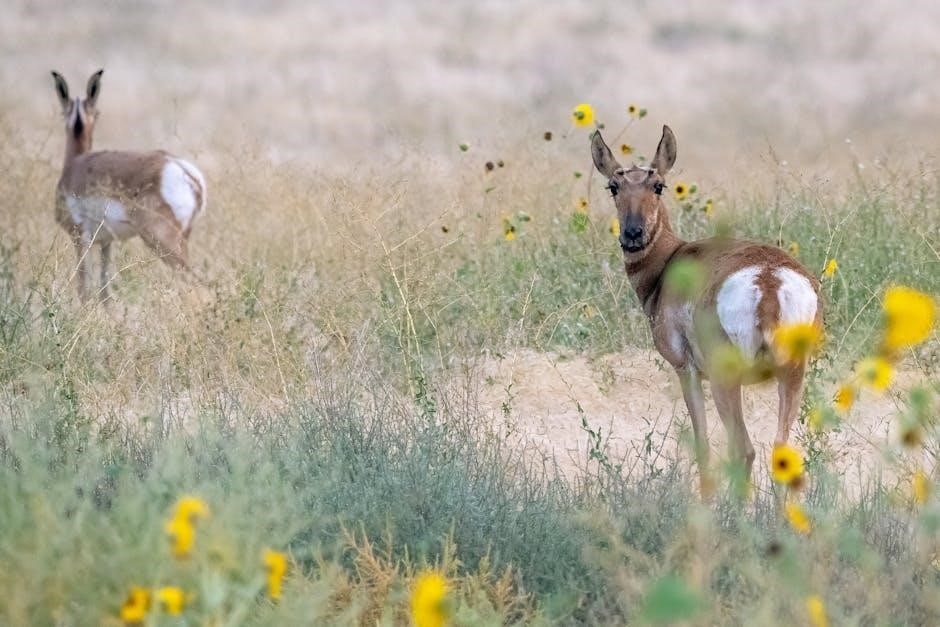Pronghorn guided hunts offer a unique blend of expertise and adventure, providing hunters with unforgettable experiences. Guides specialize in tracking and stalking, ensuring a successful and ethical hunt.
1.1 Overview of Pronghorn Antelope
The pronghorn antelope, often mistaken for a true antelope, is a native North American species. Found primarily in the western United States, it thrives in open grasslands and shrublands. Known for its distinctive horns and striking appearance, the pronghorn is a symbol of the American West. These animals are highly adaptable and can survive in harsh environments, making them a resilient species. Pronghorns are also renowned for their incredible speed, reaching up to 60 miles per hour, making them one of the fastest land animals in North America. Their unique characteristics and challenging behavior make them a prized target for hunters, while conservation efforts ensure their populations remain healthy and sustainable.
1.2 Importance of Guided Hunts for Pronghorn
Guided hunts play a crucial role in pronghorn hunting success, offering expertise and localized knowledge; Guides understand pronghorn behavior, habitat, and seasonal patterns, increasing the likelihood of a successful hunt. They provide essential skills such as tracking, stalking, and ambush tactics, which are vital for targeting these elusive and fast-moving animals. Additionally, guided hunts promote ethical and sustainable hunting practices, ensuring that pronghorn populations remain healthy. Guides also handle logistics, including permits, land access, and equipment, allowing hunters to focus solely on the hunt. Their experience and insights are invaluable, especially for novice hunters, making guided hunts a cornerstone of pronghorn hunting traditions and conservation efforts.
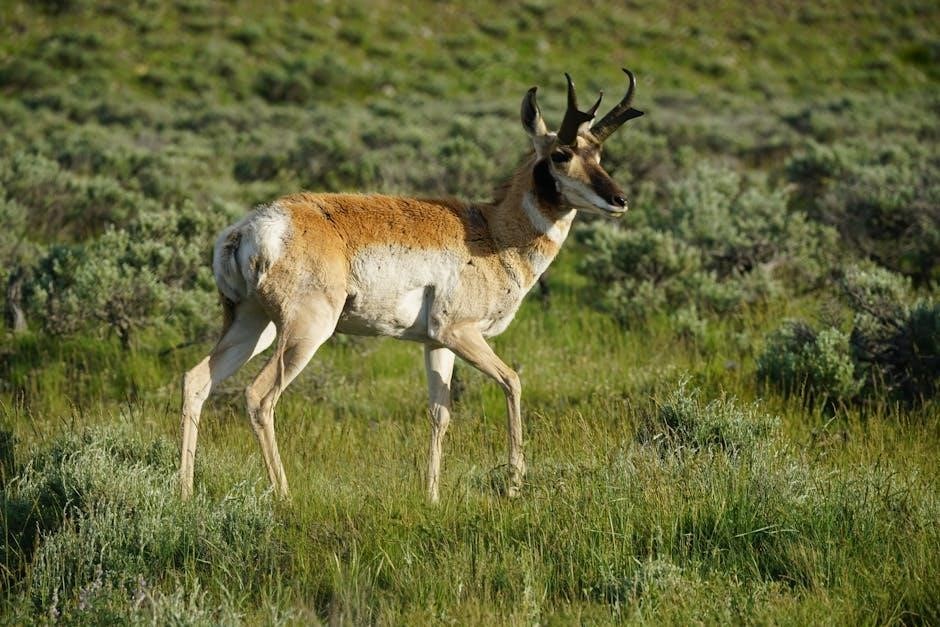
Key Considerations for Pronghorn Hunting
Licensing, permits, and land access are critical, with public and private options varying by region. Guides often provide invaluable insights and logistics support for a successful hunt.
2.1 Licensing and Permits Required
Obtaining the proper licenses and permits is essential for pronghorn hunting. Requirements vary by state, with non-residents often facing stricter regulations and limited availability. Hunters must apply through state wildlife agencies, submitting necessary documentation and fees. Some states use point systems or lotteries to allocate tags, which can impact success rates. Consulting with guides or outfitters can provide clarity on the process and improve chances of securing permits. Additionally, staying informed about application deadlines and regulations ensures compliance and avoids legal issues. Proper licensing not only supports conservation efforts but also guarantees a legal and ethical hunting experience.
2.2 Public vs. Private Land Hunting Opportunities
Hunting pronghorn can occur on both public and private lands, each offering unique advantages. Public lands provide vast, accessible areas for hunters, often with abundant pronghorn populations. However, these areas can be more crowded during hunting seasons. Private lands, while requiring permission or leases, often offer exclusive access and better-managed habitats, increasing the likelihood of encountering trophy animals. Guides and outfitters frequently have access to private properties, enhancing hunting success. Understanding land access and regulations is crucial for a legal and productive hunt. Hunters should research and plan accordingly to maximize their opportunities, whether on public or private grounds.
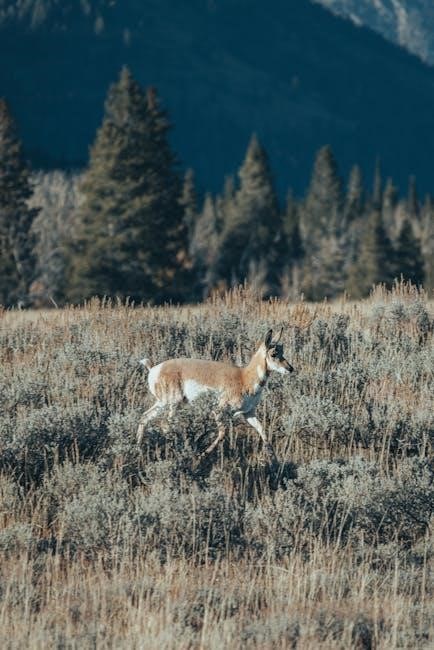
Choosing the Right Guide or Outfitter
Selecting a knowledgeable guide or outfitter is crucial for a successful pronghorn hunt. They provide expertise, local insight, and ethical practices, ensuring a memorable and productive experience.
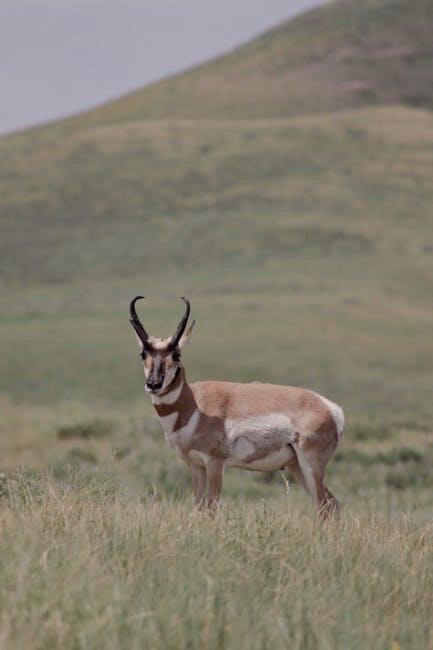
3.1 Researching Reputable Outfitters
Researching reputable outfitters is essential for a successful pronghorn hunt. Start by seeking recommendations from experienced hunters and reviewing online testimonials. Check state wildlife agency listings for licensed outfitters. Verify their success rates and ask for references to ensure reliability. Look for outfitters with extensive local knowledge and experience in pronghorn habitats. Ensure they adhere to ethical hunting practices and conservation efforts. Additionally, inquire about their gear quality, guiding strategies, and safety protocols. A reputable outfitter will also provide clear information on costs and what to expect during the hunt. Taking the time to thoroughly research ensures a professional and enjoyable experience.
3.2 Evaluating Guide Experience and Success Rates
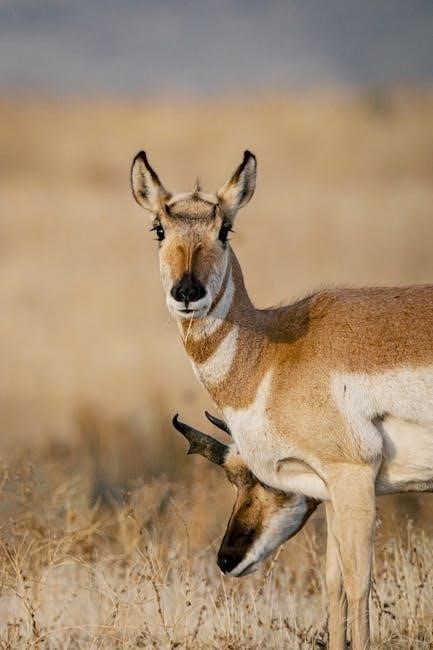
Evaluating a guide’s experience and success rates is crucial for ensuring a fruitful pronghorn hunt. Look for guides with extensive knowledge of pronghorn behavior, habitat, and migration patterns. A guide with multiple seasons of experience is preferable, as they understand the challenges and opportunities of the terrain. Request references and inquire about their success rates with past clients. A reputable guide should willingly share testimonials and provide insights into their strategies. Additionally, ensure they are familiar with local regulations and ethical hunting practices. Assessing their ability to adapt to varying conditions and their commitment to safety will further enhance your hunting experience. A skilled guide significantly increases your chances of a successful and memorable hunt.
Preparing for the Hunt
Preparing for a pronghorn hunt involves thorough planning, understanding the animal’s behavior, and ensuring all gear is in excellent condition. Physical fitness is essential for navigating challenging terrain.
4.1 Essential Gear and Equipment
When preparing for a pronghorn hunt, having the right gear is critical. A high-quality rifle with a scope is essential, as pronghorns are often engaged at long ranges. Binoculars are vital for spotting and tracking.
- Camouflage clothing and a good pair of boots are necessary for stalking in open terrain.
- A sturdy backpack with water, snacks, and a first-aid kit is recommended.
- A rangefinder ensures accurate distance measurements for ethical shots.
- Two-way radios help communicate with guides or hunting partners.
- Bring layers for varying weather conditions, as temperatures can fluctuate.
Additionally, a tree stand or ground blind can aid in concealment. Always ensure gear is well-maintained and suitable for the hunt’s demands.
4.2 Physical Conditioning and Mental Preparation
Physical conditioning is crucial for a successful pronghorn hunt, as it often involves hiking long distances and carrying gear in challenging terrain.
- Build stamina through cardio exercises like running or cycling to handle the demands of spot-and-stalk hunting.
- Strength training can improve endurance, especially for carrying heavy packs.
- Mental preparation is equally important, as hunting pronghorns requires patience and focus.
- Practice visualization techniques to stay calm under pressure and make precise shots.
- Understand the behavior of pronghorns to anticipate their movements and stay mentally sharp.
Mental toughness and physical fitness are key to enduring the challenges of a pronghorn hunt.
4.3 Understanding Weather and Terrain Challenges
Pronghorn hunts often take place in open, arid landscapes with extreme weather conditions, including intense heat, cold, and wind.
- Hunters must be prepared for unpredictable weather changes, which can impact visibility and animal behavior.
- The terrain is typically flat but vast, requiring long-distance walking and stamina to navigate effectively.
- Rough ground and rocky areas can pose challenges for footing, necessitating durable footwear.
- Understanding how weather influences pronghorn movement is key to successful stalking and ambushing.
Adapting to these environmental factors is essential for a successful and safe pronghorn hunting experience.
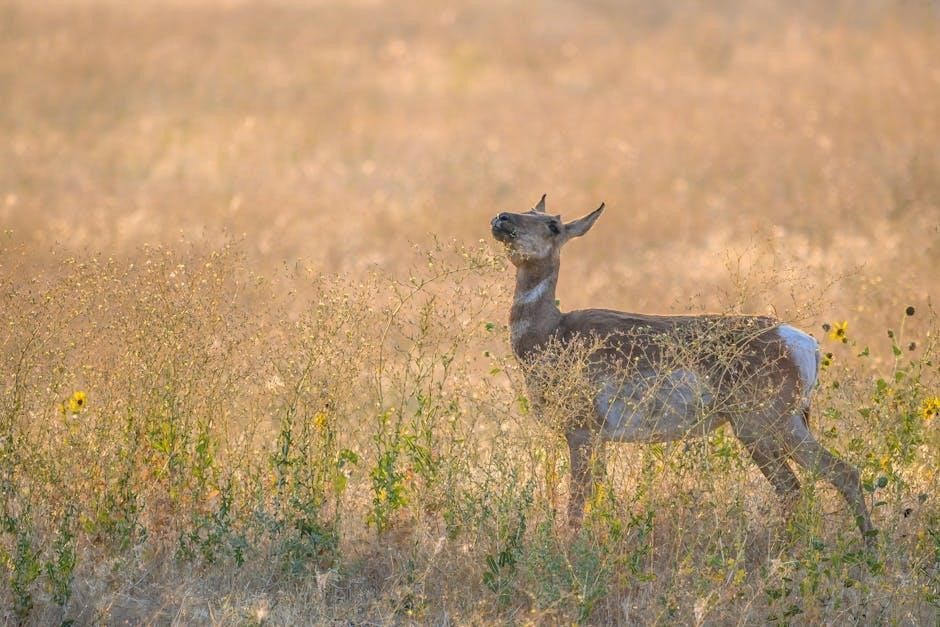
Hunting Strategies and Techniques
Effective strategies for pronghorn hunting include combining spot-and-stalk methods with precision shooting, leveraging terrain for concealment, and adapting to the animal’s keen senses and agility for success.
5.1 Spot-and-Stalk Hunting Methods
Spot-and-stalk hunting is a popular and effective method for pronghorn hunting, requiring patience, stealth, and a keen eye for terrain. Hunters typically locate herds using binoculars or spotting scopes from a distance, then carefully navigate to within shooting range. This approach demands precise camouflage and the ability to use natural cover like rocks, hills, and vegetation to remain undetected. Guides often play a crucial role in identifying herds and devising stalking routes, maximizing success rates. Spot-and-stalk hunting tests both physical endurance and mental focus, as hunters must remain still and quiet while closing the distance on these sharp-eyed animals.
5.2 Ambush Tactics and Concealment
Ambush tactics involve setting up in strategic locations where pronghorns are likely to pass, such as water sources, feeding areas, or migration corridors. Hunters often conceal themselves in natural cover like rocks, bushes, or shallow pits to remain undetected. Camouflage clothing and gear are essential to blend into the surroundings. Guides may position hunters in areas with optimal visibility, using the lay of the land to their advantage. Remaining still and patient is crucial, as pronghorns have keen eyesight and can detect even slight movements. Ambush hunting requires precise timing and coordination, making it a rewarding yet challenging method for harvesting these elusive animals.
Conservation and Stewardship
Conservation efforts ensure pronghorn populations thrive, focusing on habitat preservation and sustainable hunting practices. Hunters play a vital role in funding and supporting wildlife management programs nationwide.
6.1 Role of Hunters in Pronghorn Conservation
Hunters contribute significantly to pronghorn conservation by supporting wildlife management through license fees and adherence to regulated hunting practices. These funds are often allocated to habitat restoration, research, and anti-poaching efforts. By participating in sustainable hunting, hunters help maintain healthy pronghorn populations and ensure the species’ longevity. Ethical hunting practices, such as selective harvesting and avoiding overhunting, further promote conservation goals. Additionally, hunters often advocate for pronghorn-friendly land use policies and support organizations dedicated to preserving their habitat. This dual role as conservationists and hunters underscores their importance in protecting pronghorn antelope for future generations while fostering a balanced relationship between hunting and wildlife preservation.
6.2 Ethical Hunting Practices
Ethical hunting practices are crucial for maintaining the integrity of pronghorn guided hunts and ensuring the sustainability of the species. Hunters must prioritize respect for the animal, adhering to fair chase principles and minimizing unnecessary suffering. This includes making clean, ethical shots to guarantee a quick harvest and avoiding wasteful practices. Guides play a key role in promoting these ethics, ensuring clients follow legal and moral guidelines. By upholding these standards, hunters contribute to the preservation of pronghorn antelope and maintain a positive public perception of hunting. Ethical practices not only honor the animal but also safeguard the future of the sport and the ecosystem it supports.
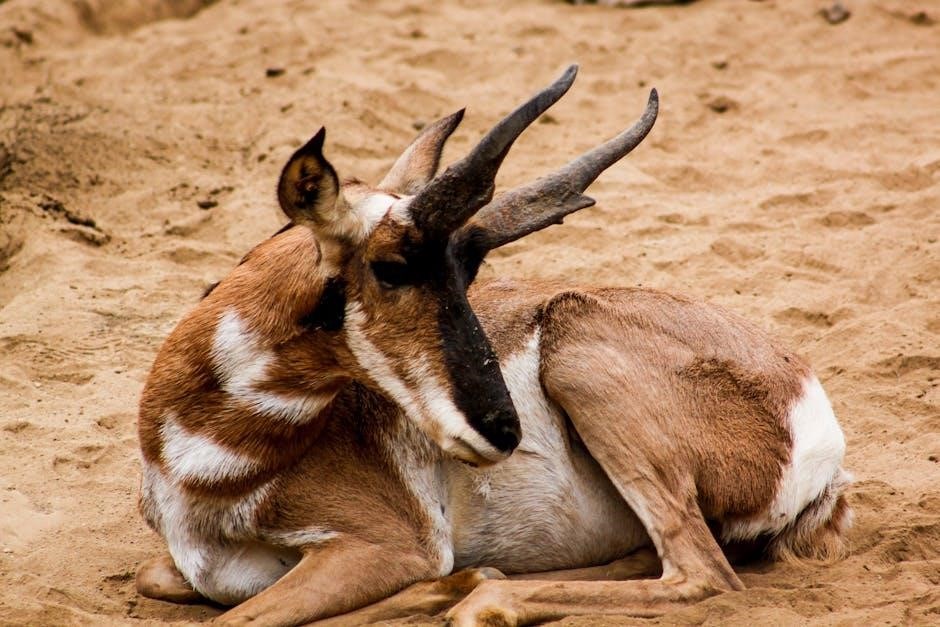
Post-Hunt Procedures
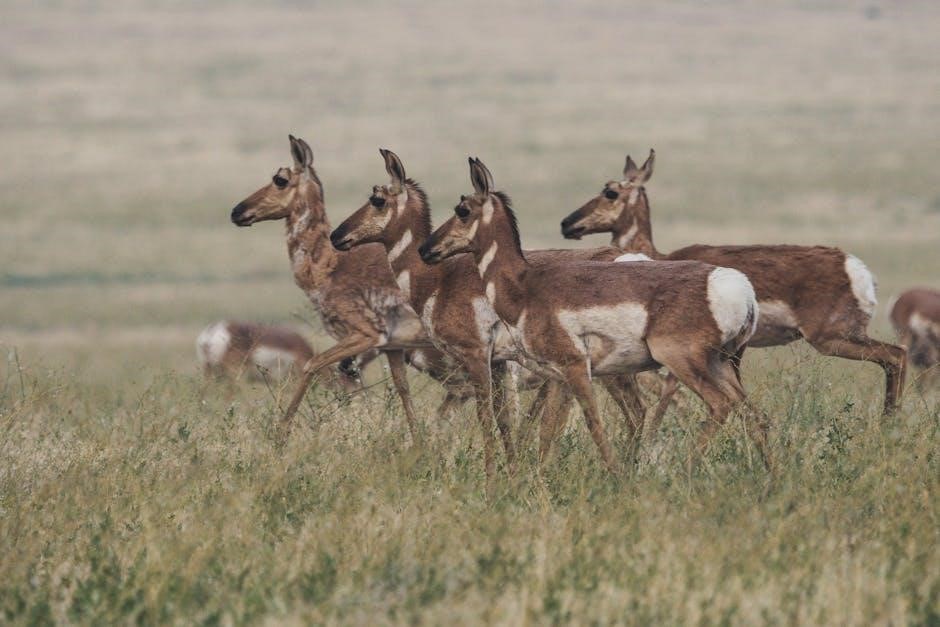
Post-hunt procedures involve field dressing, handling meat, and trophy preparation. Hunters must adhere to regulations and ensure respectful treatment of the harvested animal. Efficiency and care are prioritized.
7.1 Field Dressing and Handling Meat
Field dressing is a critical step to ensure the quality and safety of pronghorn meat. It involves removing the internal organs to cool the carcass quickly, preventing spoilage. Hunters should make precise incisions to avoid damaging the meat or organs. Proper hygiene is essential to avoid contamination. Once dressed, the meat should be cooled promptly, either by hanging or using ice. Handling with care prevents bruising or tearing. Many hunters opt to transport the carcass to a professional butcher for processing. Proper handling ensures a high-quality final product for consumption or storage. Guidance from experienced guides can help hunters perform these tasks efficiently and effectively, preserving the integrity of the harvest.
7.2 Taxidermy and Trophy Preparation
Taxidermy and trophy preparation are important steps for preserving the memory of a successful pronghorn hunt. Proper field care, such as cooling the hide and avoiding damage, ensures optimal results. Skinning and preparing the hide for mounting requires precision to maintain the animal’s natural appearance. Hunters can choose from various mount styles, including shoulder mounts or full-body displays, depending on their preference. Professional taxidermists specialize in creating lifelike poses and expressions, capturing the pronghorn’s unique features. The process typically takes several months, with the final product serving as a lasting memento of the hunt. Researching reputable taxidermists is crucial to achieve a high-quality finish.
Cost and Budgeting
Pronghorn guided hunts vary in cost depending on location, guide experience, and hunt duration. Average prices range from $2,000 to $5,000, with additional expenses for travel and gear. Budgeting for licenses, accommodations, and potential taxidermy fees is essential for a comprehensive planning approach.
8.1 Average Costs of Guided Hunts
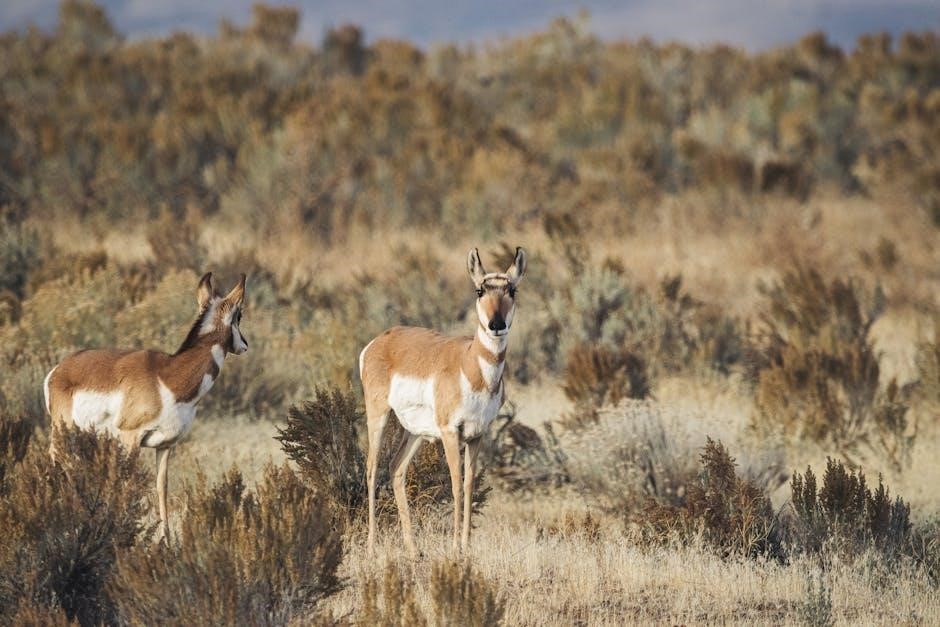
The average cost of a pronghorn guided hunt typically ranges between $2,500 and $5,000, depending on factors like location, guide experience, and the duration of the hunt. Hunts in prime areas with higher pronghorn densities, such as Wyoming or Montana, tend to be more expensive. A five-day guided hunt might cost around $3,000 to $4,000, while shorter trips or DIY options can be slightly more affordable. Additionally, prices may include services like scouting, field preparation, and transportation, but often exclude licenses, tags, and gear. It’s important to inquire about what’s included in the package to avoid surprise expenses.
8.2 Additional Expenses to Consider
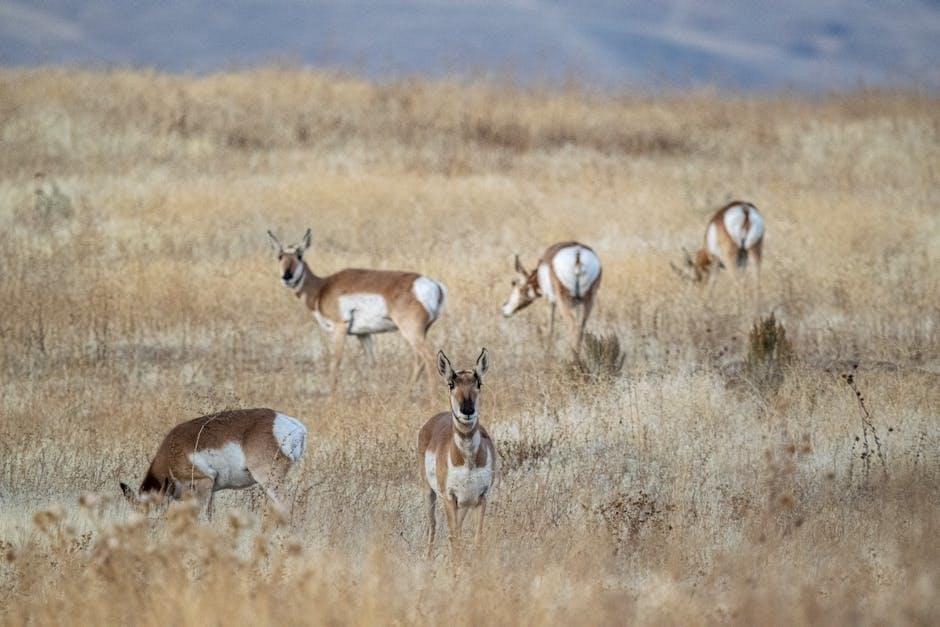
Beyond the base cost of guided hunts, several additional expenses should be budgeted for when planning a pronghorn hunting trip. Licenses and permits are typically not included in the initial price and can range from $200 to $600, depending on residency and state regulations. Travel costs, including flights, rental vehicles, and lodging, can add another $500 to $1,000, especially for remote hunting locations. Gear, such as rifles, optics, and appropriate clothing, may also incur extra charges if not already owned. Food and accommodations before or after the hunt, as well as potential taxidermy fees, should also be factored into the overall budget. Planning ahead for these extras ensures a more accurate financial estimate.
Pronghorn guided hunts offer an unforgettable experience for hunters seeking to challenge themselves in the vast, open landscapes of the American West. These expeditions require careful preparation, a deep understanding of the animal, and adherence to ethical practices. By selecting experienced guides and adhering to conservation efforts, hunters play a vital role in preserving pronghorn populations and habitats. The combination of skill, strategy, and stewardship ensures a rewarding and sustainable hunting experience. Whether for trophy pursuit or the thrill of the chase, pronghorn guided hunts provide a unique opportunity to connect with nature and test one’s abilities in the field.
